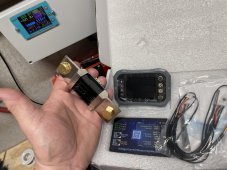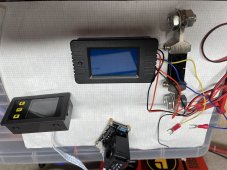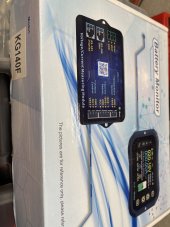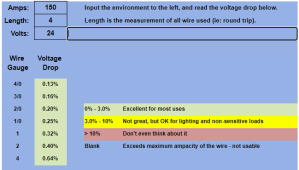All good capacity meters need a way of measuring current, voltage and use an algorithm to calculate capacity. Probably the best one out there is a Victron $$$$. But there’s others that do fine job that I’ve tested or will in the future. They all come with a mouse print manual written in chinglish except the Victon & the KG140F. The others are sold under different names for the same unit on EBay and Amazon. In any case, select the version that can measure amps for system expansion in the future. There are two ways of measuring current. One is a shunt and the other is a Hall effect coil (looks like an ac current transformer, but it isn’t). The one I have in-use has worked well for a year now and has the easiest display to understand at a glance. That one uses a Hall effect coil. It uses wireless communication between the head unit and it’s module only, not to any other devices. The one with my hand in it I haven’t tried yet but it does have the most features and Bluetooth. The worst one is the one with the single button. Single color display and pain to set. Really, are buttons that expensive or ugly so you only get one? The one shown with the ribbon cable has a simple multi color display and works ok. All but the Victon and the single button can control an external relay for hi or low current or voltage conditions if can figure out the manual. Every one of these can drift in the capacity figures and need to be periodically reset to be absolutely accurate but you will grow tired and just let it be. Usually never more error than 5% if you never touch it again. Some battery’s bms’s that have Bluetooth do an amazing job of calculating capacity. 







Last edited:




